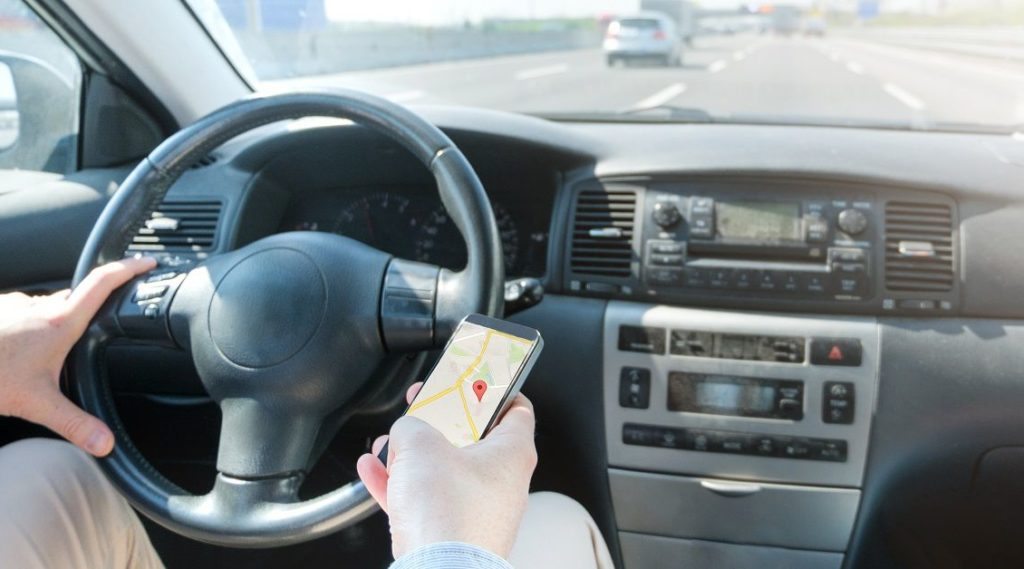
According to federal government data, more than 1,000 people are injured every single day in accidents caused by distracted drivers. In recent years, distracted driving has become a leading cause of vehicle collisions, with texting, using social media, and other phone-related distractions being among the most common factors.
Distracted driving is negligent driving in California. So, if the driver who hit you was on the phone or otherwise distracted, you may be able to recover compensation for the injuries you suffered in the accident. But, how do you prove that the other driver was distracted?
What Qualifies as “Distracted Driving”?
Driving requires focus regardless of how much traffic there is or how fast you are traveling. It only takes a split-second mistake to cause a serious accident, and yet studies show that many drivers spend multiple seconds at a time looking at their phones instead of looking at the road.
According to the National Highway Traffic Safety Administration (NHTSA), in the time it takes to send or read a text message, a vehicle can travel the length of a football stadium at highway speeds. That is a lot of ground to cover without looking at the road ahead.
However, while texting and using social media are among the most common – and the most dangerous – driving distractions, they are far from the only distractions that lead to unnecessary accidents. The NHTSA defines distracted driving as “any activity that diverts attention from driving.” This includes everything from talking to passengers to looking at an accident on the other side of the road (rubbernecking).
Government agencies recognize three separate types of driving distractions:
- Cognitive distractions that take drivers’ minds off of the task at hand
- Manual distractions that take drivers’ hands off of the wheel
- Visual distractions that take drivers’ eyes off of the road
Any one of these types of distractions can lead to an accident, and studies have shown that activities involving all three types of distractions (i.e., texting or using social media) increase a driver’s chances of causing an accident significantly.
What Are the Signs of Distracted Driving?
While there are many different forms of distracted driving, all forms of distraction affect drivers’ cognitive, manual, and/or visual ability to safely navigate their vehicles on the road. With this in mind, some of the common signs that a driver is distracted behind the wheel include:
- Looking down instead of looking at the road
- Drifting out of the driver’s lane or onto the shoulder
- Weaving in the driver’s lane or “bouncing” from one side of the lane to the other (often when the vehicle’s lane-assist technology corrects the driver’s steering on his or her behalf)
- Getting close to other vehicles and then braking harshly despite there being plenty of room to stop or slow down safely with ordinary braking force
- Slowing down or driving below the speed limit for a brief period of time and then speeding up suddenly for no apparent reason
However, a distracted driver will not necessarily exhibit a pattern of erratic driving prior to causing an accident. As we said above, it only takes one short distraction to cause a serious or fatal collision.
How Do You Prove That the Other Driver Was Distracted?
Those are some of the telltale signs of distracted driving, but how do you prove that the other driver was distracted so that you can recover just compensation? While the circumstances of individual collisions vary, the types of evidence that may be available to prove distracted driving was a factor in your accident include:
- The driver’s own statements, as heard by witnesses or as provided to the police or EMTs
- The driver’s cell phone records (if he or she was talking on the phone, texting, searching, or using social media or another app at the time of the crash)
- Physical evidence that the driver was distracted, such as a lit cigarette, spilled food or drink, or the driver’s phone lying on the floor of his or her vehicle
- Traffic or security camera footage showing that the other driver was distracted at the time of (or immediately prior to) the crash
- Other evidence that it may be possible to uncover through a forensic investigation or by obtaining records from a third party (i.e., the driver’s employer, if he or she was working at the time of the crash)
When you meet with an attorney, be sure to share what you saw immediately prior to the accident. The points above will help corroborate your story, but it all begins with you presenting as much information as you can at the initial case review.
Were You Injured by a Distracted Driver?
If you were injured in a car accident and you believe that the other driver may have been distracted, we encourage you to contact us promptly. The Law Offices of Mickey Fine serves clients in Bakersfield, and nearby areas of California.
To discuss your case with attorney Mickey Fine, please call (661) 333-3333 or contact us online.
